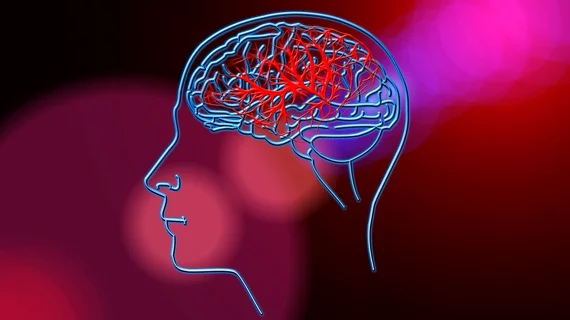COVID-19 patients with neurological symptoms warrant ‘prompt workup’ for stroke
COVID-19 patients admitted to the emergency department with neurological symptoms are at an increased risk for large vessel stroke, and clinicians should not hesitate to activate a stroke code in such situations.
That’s according to research out of Mount Sinai’s Icahn School of Medicine, which found patients infected with the new virus are 2.4 times more likely to suffer large vessel occlusion stroke compared to healthy individuals.
And these patients need to be more closely monitored, first author Shingo Kihira, MD, with the New York system’s radiology department, and colleagues warned Wednesday in the American Journal of Roentgenology.
“Health care providers in the emergency department and inpatient areas should be cognizant of this association and not delay activating a stroke code,” the authors added. “This association may aid neurointerventionalists assessing the presence and location of an LVO if they are aware of this elevated risk in the COVID-19 population. Additionally, this association may imply that patients with LVO during the COVID-19 pandemic who have not undergone testing for SARS-CoV-2 infection or are waiting for results warrant higher suspicion and appropriate precautions.”
The healthcare community continues to learn more about the novel virus as research progresses. Many studies have reported on the neurological manifestations of the disease, with one indicating as many as 36% of admitted patients suffered from adverse brain symptoms. An investigation published in May also demonstrated that while the rate of ischemic stroke in pandemic patients is relatively low, such cases are often more severe.
For the current study, Kihira et al. retrospectively analyzed 329 patient cases (203 without COVID) involving stroke code activation that took place between March 16 and April 30. The individuals were admitted to one of six hospitals in Mount Sinai’s health system.
They determined that COVID-19 is associated with LVO stroke, but not small vessel occlusion stroke. Among the former, most occurred in the middle cerebral artery segments M1 and M2 (62%).
After pinpointing individual stroke-related risk factors, only Hispanic ethnicity was “significantly” associated with infection. Prior reporting has backed up this claim, the authors noted.
Stroke care has been heavily disrupted during this ongoing crisis, but clinicians need to lower the requirement for taking action, Kihira and colleagues concluded.
“Patients with COVID-19 presenting with acute neurologic symptoms warrant a lower threshold of suspicion of large vessel stroke, and prompt workup for large vessel stroke is recommended,” they wrote. “Future investigation may focus on the exact pathophysiologic mechanism of large vessel strokes in patients with COVID-19 and validate contributing risk factors through a larger study."

